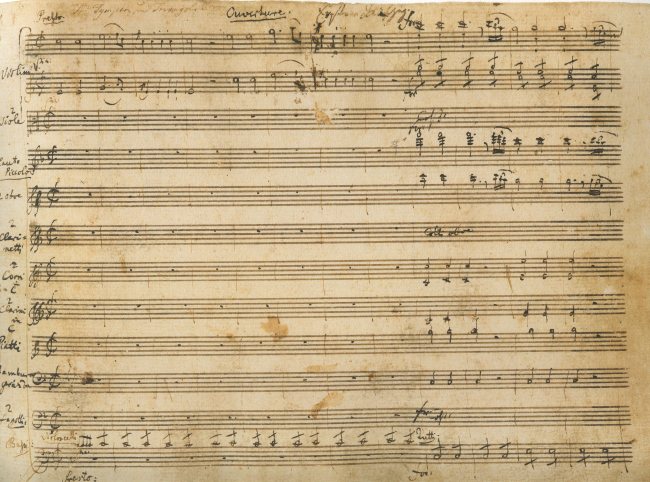|
MOZART, Wolfgang Amadeus, 1756-1791
Die Entführung aus dem Serail K. 384. Facsimile of the Autograph Score, Staatsbibliothek zu Berlin - Preussischer Kulturbesitz, Biblioteka Jagiellońska Krakow (Mus. ms. autogr. W.A. Mozart 384), Stanford University Library, The Juilliard School Library. Introductory Essay by Hendrik Birus; Musicological Introduction by Ulrich Konrad.
[Mozart Operas in Facsimile, 2]
 beginning of the overture (click image to see full-size version)
Mozart Operas in Facsimile, 2. Palo Alto, 2008. Oblong, 4°, 2 vols, 618 pp. Full-color reproduction of the autograph score. Die Entführung aus dem Serail, Mozart's three-act singspiel "after Bretzner", was not only his most rousing success on the operatic stage but an event of epoch-making importance. Its success can be put into historical context by placing it on a coordinate plane with northern vs. southern singspiel and opéra comique vs. opera buffa as its axes. This "teutsche oper" as Mozart referred to it on "Turkish" subject-matter so popular at the time marked the composer's Vienna debut as a stage composer. After its premiere on 16 July 1782 Die Entführung remained in the Burgtheater's repertoire for the rest of the season and the next one as well. It soon spread beyond Vienna to theaters in Austria and abroad, becoming the longest-lasting theatrical success of Mozart's career. In working with the singspiel material Mozart sought to strike a perfect balance in the interaction between music and stage movement. A play of this type needs to unfold in accordance with its own laws, yet it is one of the peculiarites of composing for the operatic stage that composers generally provide more music than is regarded as abolutely necessary for a theatrical production. An examination of the autograph score shows many cancellations in ink or red pencil and pasted slips of paper containing fully completed parts or even entire pages of full score. In a letter to his father dated 20 July 1782 Mozart writes: " I send herewith the original score and two copies of the libretto. You will see that I have cut out many passages; this is because I knew that scores here are copied out at once so I gave free rein to my ideas and then made alterations and cuts here and there just before sending it to be written. The opera was performed just as you now have it". The facsimile importantly reunites parts of the autograph now preserved in two different libraries (acts I & III from the Biblioteka Jagiellońsa in Kraków, and act II from the Mendelssohn Archive of the Staatsbibliothek Preußischer Kulturbesitz in Berlin). The edition also reproduces additional autograph material as well as sketches and drafts from both public and private collections. Bibliophile edition, in two volumes, bound in dark brown quarter leather with beige linen boards.Bibliophile edition, in two volumes, bound in dark brown quarter leather with beige linen boards. $215
(view
other
volumes
from this series)
ISBN 1-933280-08-5 |
|
|
